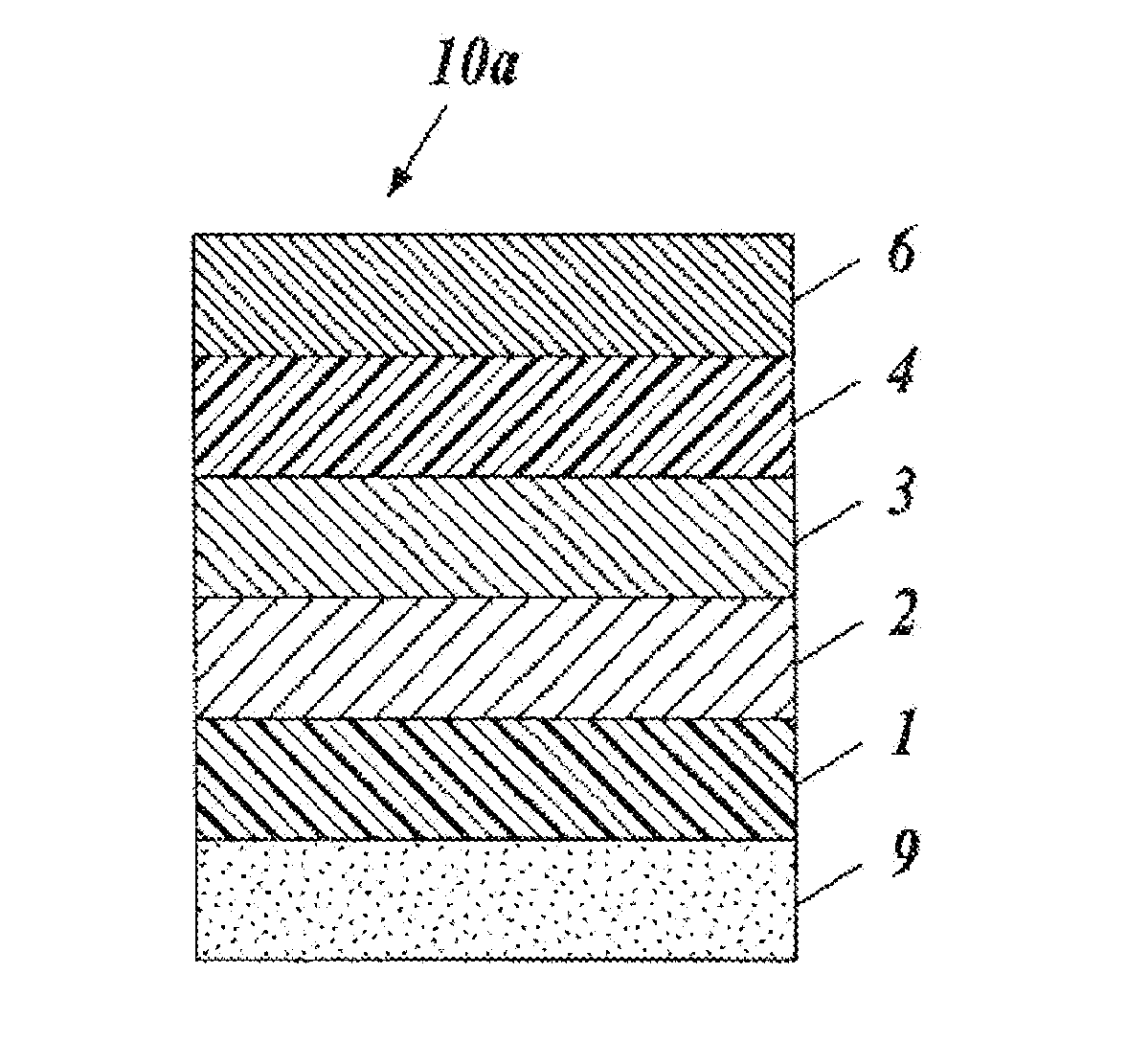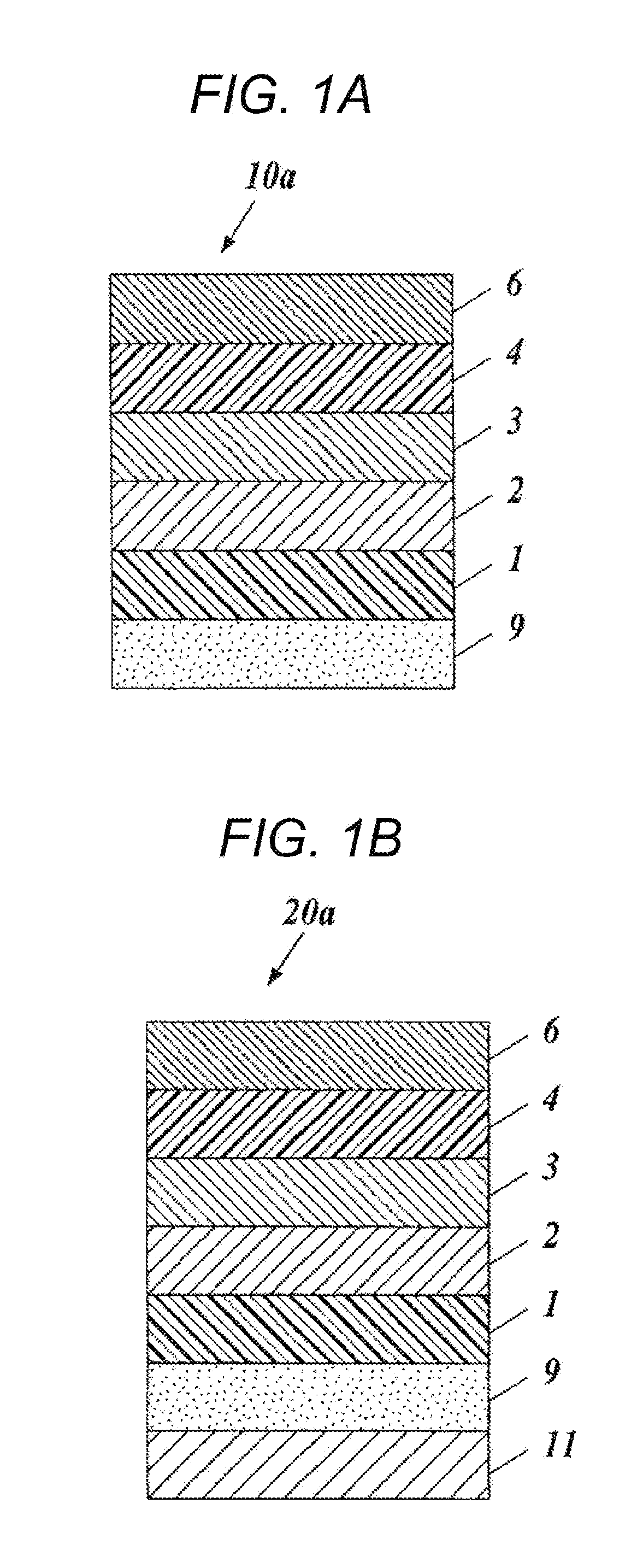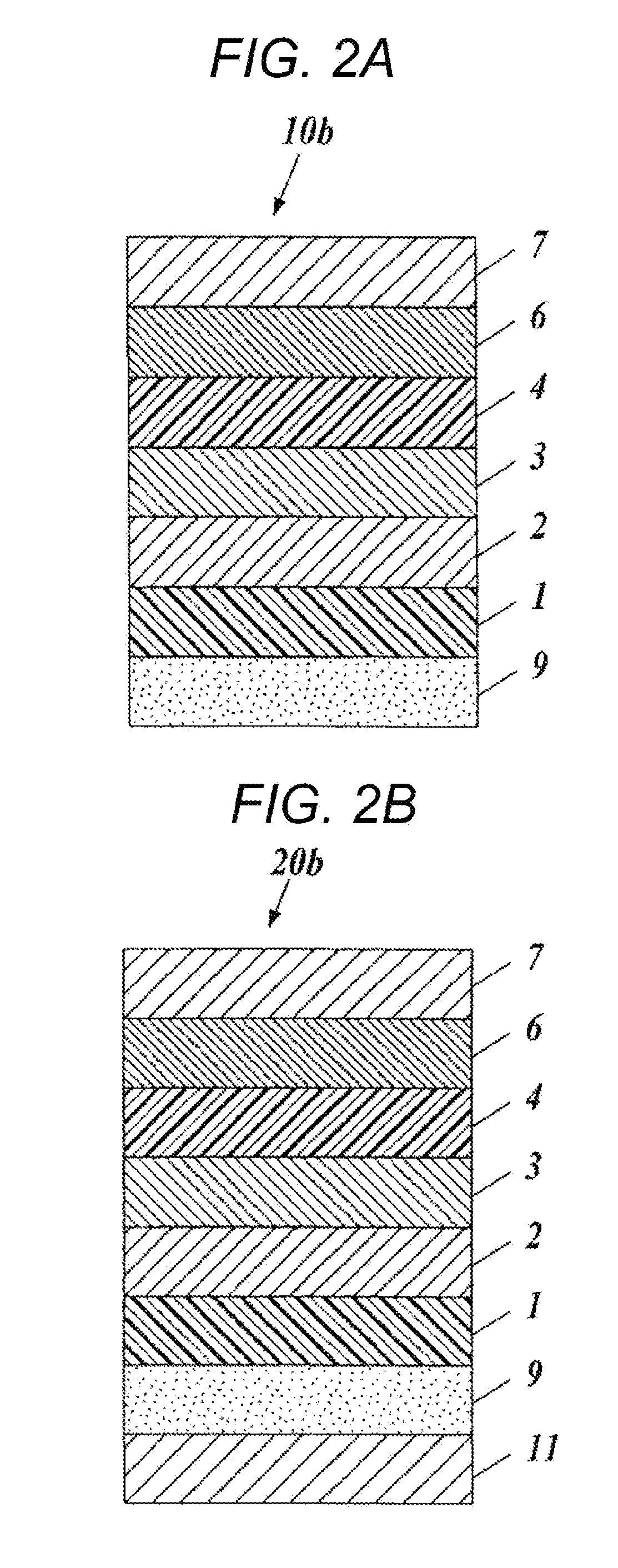Film mirror, film mirror manufacturing method, film mirror for photovoltaic power generation, and reflection device for photovoltaic power generator
a film mirror and photovoltaic power generation technology, applied in the field of film mirrors, can solve the problems of not being able to continue to use fossil fuels at the current rate, not being able to achieve the effect of sustaining the survival of mankind in the future, and efficiently concentrating solar light, excellent weather resistance and high reflectivity
- Summary
- Abstract
- Description
- Claims
- Application Information
AI Technical Summary
Benefits of technology
Problems solved by technology
Method used
Image
Examples
example 1
Manufacture of Film Mirror of Example 1
[0417]A biaxially-stretched polyester film (polyethylene terephthalate film having a thickness of 25 μm) was used as the resin substrate 1.
[0418]On one side of the above-mentioned polyethylene terephthalate film, a resin liquid in which polyester resin (POLYESTER SP-181 produced by Nippon Synthetic Chemical Industry Co., Ltd.), a melamine resin (Super Beckamine J-820 produced by DIC), TDI-based isocyanate (2,4-tolylene diisocyanate), and HMDI-based isocyanate (1,6-hexamethylene diisocyanate) are mixed in toluene such that the resin solid content ratio is 20:1:1:2 and the solid matter concentration is 10% was coated by a gravure coating method to form the anchor layer 2 with a thickness of 0.1 μm.
[0419]On the anchor layer 2, a silver reflective layer with a thickness of 100 nm was formed by a vacuum vapor deposition method.
[0420]Further, on the silver reflective layer, mixed resin of polyester resin and TDI-based isocyanate with a resin solid co...
example 2
Manufacture of Film Mirror of Example 2
[0430]The film mirror 10b of Example 2 was obtained in the same method as Example 1 except that, on top of the outermost layer (on the dielectric reflective layer 6) of the film mirror 10a of Example 1, the ultraviolet absorbing layer 7 consisting of an acrylic resin material was additionally formed by coating to have a dry film thickness of 50 μm (see FIG. 2A).
[0431]To 800 ml MEK (methyl ethyl ketone), 150 g of the acrylic resin BR-85 and 50 g of BR-87 (all manufactured by Mitsubishi Rayon Co., Ltd.) were added in order under stirring and dissolved for 1 hour at 50° C. After confirming the dissolution of the acrylic resins, 1 g of TINUVIN1577 and 4 g of TINUVIN234 (all manufactured by BASF) were added as an UV absorbing agent. By dissolving for 30 minutes under stirring, a coating liquid for ultraviolet absorbing layer consisting of an acrylic resin material was produced.
[0432]Further, the reflection device for photovoltaic power generation 20...
example 3
Manufacture of Film Mirror of Example 3
[0433]The film mirror 10b of Example 3 was obtained in the same method as Example 2 except that the coating liquid “H3” for a high refractive index layer and the coating liquid “L3” for a low refractive index layer described below were used instead of the coating liquid “H2” for a high refractive index layer and the coating liquid “L2” for a low refractive index layer for the film mirror 10b obtained from Example 2 (see FIG. 2A).
[0434]The coating liquid “H3” for a high refractive index layer and the coating liquid “L3” for a low refractive index layer were prepared in the same manner as the coating liquid “H2” for a high refractive index layer and the coating liquid “L2” for a low refractive index layer except that polyvinyl alcohol (hereinbelow, also referred to PVA) (polyvinyl alcohol 235, manufactured by Kuraray Co., Ltd.) was used in the same amount as gelatin mass (gelatin with a low molecular weight+gelatin with high molecular weight) ins...
PUM
| Property | Measurement | Unit |
|---|---|---|
| Thickness | aaaaa | aaaaa |
| Thickness | aaaaa | aaaaa |
| Thickness | aaaaa | aaaaa |
Abstract
Description
Claims
Application Information
 Login to View More
Login to View More - R&D
- Intellectual Property
- Life Sciences
- Materials
- Tech Scout
- Unparalleled Data Quality
- Higher Quality Content
- 60% Fewer Hallucinations
Browse by: Latest US Patents, China's latest patents, Technical Efficacy Thesaurus, Application Domain, Technology Topic, Popular Technical Reports.
© 2025 PatSnap. All rights reserved.Legal|Privacy policy|Modern Slavery Act Transparency Statement|Sitemap|About US| Contact US: help@patsnap.com



